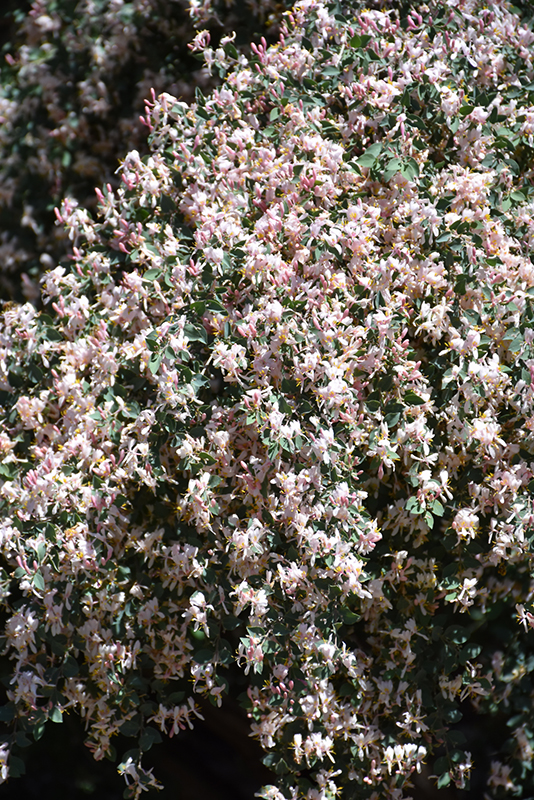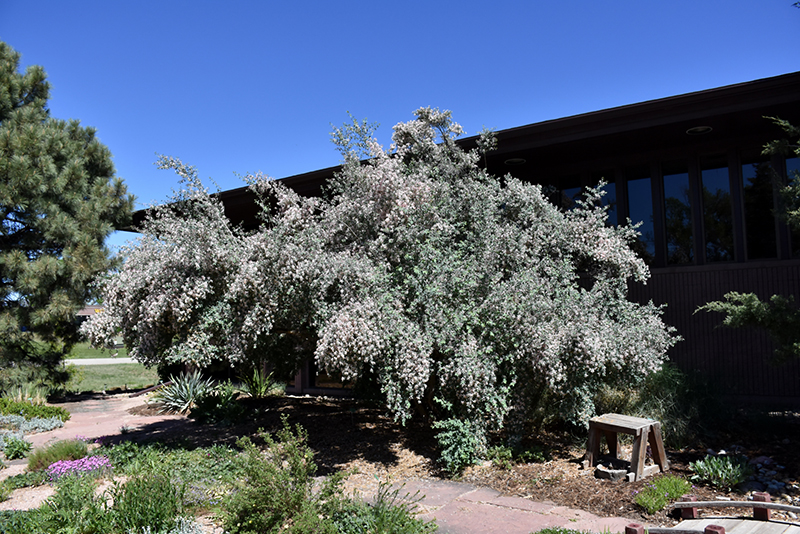>> Home
Blue Velvet® Honeysuckle
Lonicera korolkowii 'Floribunda'
Height: 12 feet
Spread: 10 feet
Sunlight:
![]()
![]()
Hardiness Zone: 4a
Other Names: Blueleaf Honeysuckle
Description:
An uncommon honeysuckle whose main attribute is powdery blue-gray leaves on arching sprays of branches; lovely pale pink flowers in spring followed by bright red berries in late summer; resistant to aphid damage, and drought tolerant once established
Ornamental Features
Blue Velvet® Honeysuckle features showy shell pink flowers with rose anthers along the branches from early to mid spring, which emerge from distinctive rose flower buds. It has attractive steel blue foliage with hints of grayish green. The oval leaves are highly ornamental but do not develop any appreciable fall color. It features an abundance of magnificent red berries from mid summer to mid fall.
Landscape Attributes
Blue Velvet® Honeysuckle is an open multi-stemmed deciduous shrub with a shapely form and gracefully arching branches. Its relatively fine texture sets it apart from other landscape plants with less refined foliage.
This shrub will require occasional maintenance and upkeep, and can be pruned at anytime. It is a good choice for attracting birds and butterflies to your yard. Gardeners should be aware of the following characteristic(s) that may warrant special consideration;
- Insects
Blue Velvet® Honeysuckle is recommended for the following landscape applications;
- Mass Planting
- Hedges/Screening
- General Garden Use
Planting & Growing
Blue Velvet® Honeysuckle will grow to be about 12 feet tall at maturity, with a spread of 10 feet. It has a low canopy with a typical clearance of 2 feet from the ground, and is suitable for planting under power lines. It grows at a medium rate, and under ideal conditions can be expected to live for approximately 30 years.
This shrub does best in full sun to partial shade. It is very adaptable to both dry and moist growing conditions, but will not tolerate any standing water. It is considered to be drought-tolerant, and thus makes an ideal choice for xeriscaping or the moisture-conserving landscape. It is not particular as to soil type or pH. It is highly tolerant of urban pollution and will even thrive in inner city environments. This is a selected variety of a species not originally from North America.

